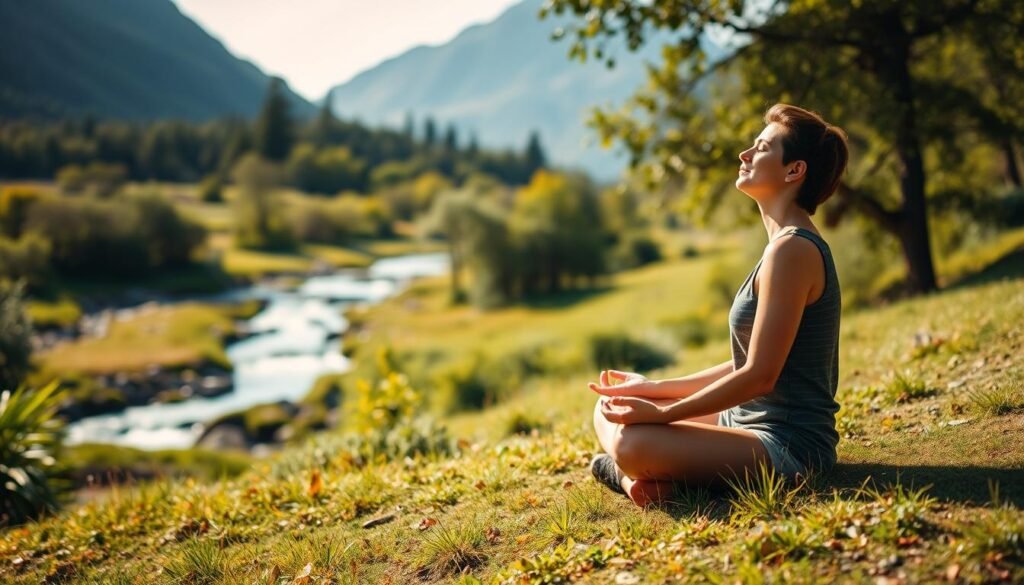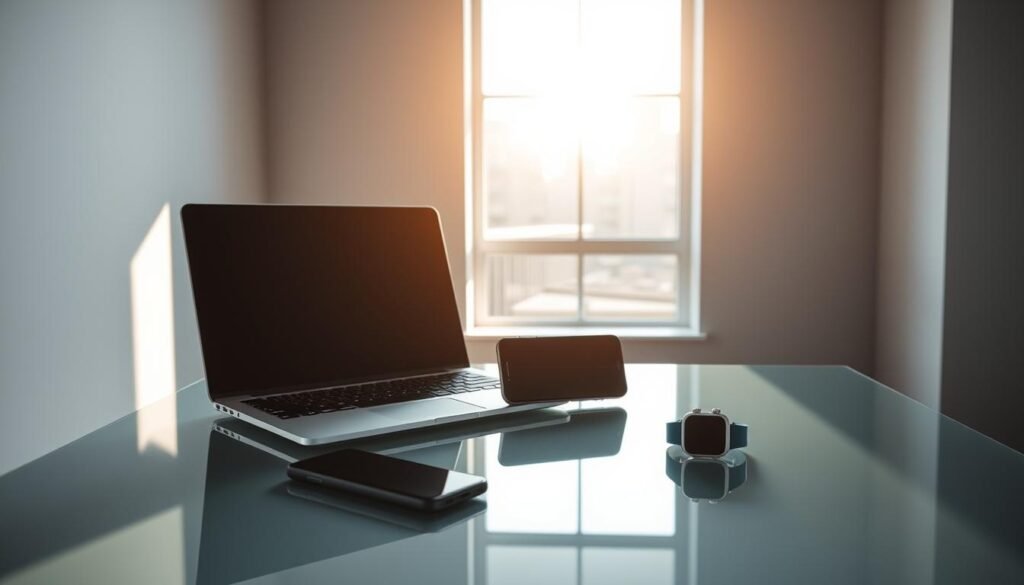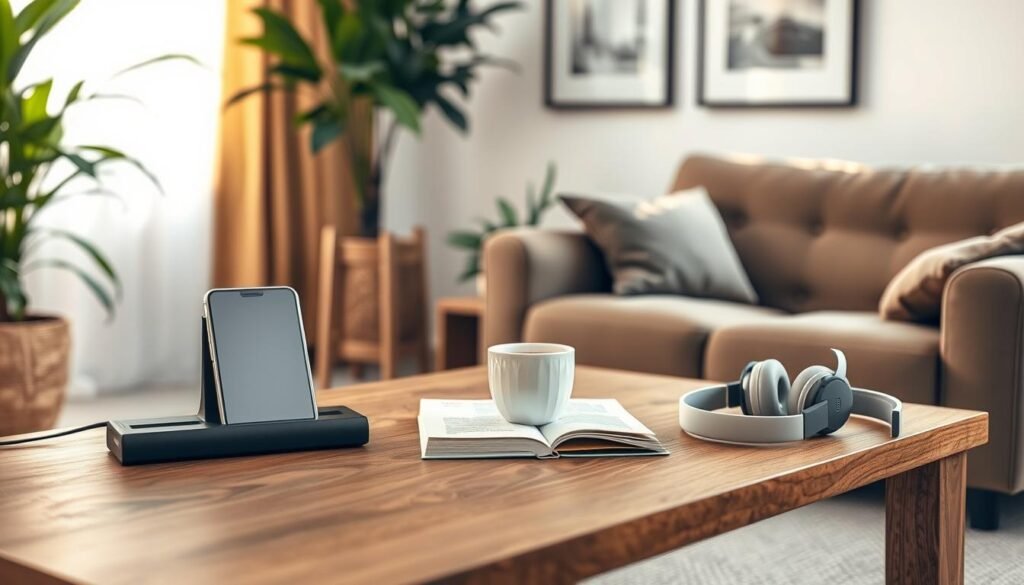In today’s digitally dominated world, taking a break from our devices can be a refreshing escape. A digital detox retreat offers a chance to unplug, recharge, and reconnect with nature and oneself.
Imagine a serene environment where you can leave your smartphone behind and focus on your well-being. Planning a digital detox involves choosing a secluded location, engaging in outdoor activities, and practicing mindfulness.
By escaping the digital world, you can reduce stress, improve mental clarity, and enhance your overall quality of life. This article will guide you through the process of planning your digital detox retreat, ensuring a rejuvenating experience.
Key Takeaways
- Understand the benefits of a digital detox retreat
- Learn how to choose a secluded location for your retreat
- Discover activities to enhance your digital detox experience
- Find tips on maintaining a healthy digital balance
- Explore the positive impact of digital detox on mental health
The Growing Need for Digital Detox in Modern Life
In today’s world, we’re surrounded by digital devices. Smartphones, social media, and constant notifications fill our lives. It’s easy to feel overwhelmed by the digital world.
The Impact of Digital Overload on Mental Health
Too much digital use can harm our mental health. It can lead to anxiety, depression, and a short attention span. The endless flow of information can cause burnout and fatigue. Managing digital overload is crucial for good mental health.
Signs You Need a Digital Detox
Do you find yourself scrolling through social media without purpose? Do you feel anxious without your phone? Or do you struggle to focus because of digital distractions? These are signs you might need a digital detox. Feeling overwhelmed by notifications and struggling to balance work and life are also indicators.
Statistics on American Screen Time
Americans spend 4-6 hours daily on their smartphones. Some use their screens for up to 12 hours. This excessive screen time affects our physical and mental health.
| Category | Average Time Spent |
|---|---|
| Smartphone Use | 4-6 hours/day |
| Social Media Use | 2-3 hours/day |
| Total Screen Time | 6-12 hours/day |

Benefits of Unplugging from Technology
Unplugging from technology has many benefits for our mental, emotional, and physical health. It helps reduce stress and anxiety, making life more balanced and fulfilling.
Mental and Emotional Benefits
Digital detox helps us achieve mental clarity. It stops the endless flow of information, letting us focus on ourselves. This break can improve how we handle our emotions and bring calmness.
Physical Health Improvements
Not using technology can also boost our physical health. Less screen time means better sleep, less eye strain, and more time for physical activities.
Enhanced Social Connections
Even though tech connects us, taking a digital detox can strengthen our social bonds. It encourages us to meet people face-to-face. This can lead to deeper, more meaningful relationships and a stronger community feeling.
| Benefits | Description |
|---|---|
| Mental Clarity | Reduced stress and improved focus |
| Physical Health | Improved sleep and reduced eye strain |
| Social Connections | Deeper, face-to-face relationships |

Assessing Your Digital Habits Before the Retreat
Looking at your digital life is key before a digital detox. Knowing your habits helps you see where you can improve. This way, you’ll get the most out of your retreat.
Tracking Your Screen Time
Start by tracking how much time you spend on screens each day. Most phones have tools to track this, or you can use apps. This will show you where you can cut back.
Identifying Digital Dependencies
Then, figure out what digital things you can’t do without. Are you always on social media or checking emails? Knowing what you’re addicted to is the first step to change.
Understanding Your Digital Triggers
Lastly, think about why you reach for your devices. Is it boredom, stress, or just habit? Knowing your triggers helps you find ways to handle them during your detox.

Setting Meaningful Goals for Your Digital Detox
For a successful digital detox, setting clear goals is crucial. By knowing what you want to achieve, you can make your detox more effective. This way, you get the most out of it.
First, think about what you want to get from your digital detox. Do you want to lower stress, improve focus, or boost your health? Having clear goals will guide your detox journey.
Short-term Objectives
Short-term goals might be to cut down on screen time, practice mindfulness, or get more active. These should be specific, measurable, and achievable during your detox.
Long-term Digital Wellness Aspirations
Long-term goals could be about making healthier digital habits. This might mean setting screen-free times or days, or using tech more wisely. These goals aim to bring lasting changes after your detox.
Creating Measurable Outcomes
To track your digital detox success, set measurable goals. You could log your screen time, write about your experiences, or set milestones. This way, you can see how you’re doing and make changes if needed.

How to Plan a Digital Detox Retreat Anywhere
Planning a digital detox retreat can be a life-changing experience. It lets you disconnect from tech and reconnect with yourself, no matter where you are. The goal is to create a space that supports digital detox and fits your personal style.

Urban Detox Options
Urban detox retreats mix city life with a break from digital overload. You can explore parks, visit museums, or enjoy a tech-free day in a coffee shop. Urban detox is great for city dwellers who want to take a digital break.
Rural and Nature-Based Retreats
Nature has healing powers, making nature-based retreats a top choice for digital detox. Whether it’s a mountain lodge, beach house, or forest cabin, nature helps you unplug and refresh.
At-Home Detox Possibilities
For those who love their own space, an at-home detox is a good option. It means setting up a tech-free area in your home, doing analog activities, and planning a schedule with less digital time.
Budget-Friendly Retreat Ideas
Going on a digital detox doesn’t have to cost a lot. Budget-friendly choices include camping, using public libraries, or joining community events focused on digital detox. It’s about the experience, not the price.
By exploring these options, you can plan a digital detox that fits your life, budget, and preferences. This ensures a meaningful and refreshing experience.
Determining the Ideal Duration for Your Detox
Deciding how long your digital detox should last is a personal choice. It depends on your goals, lifestyle, and how much you use digital devices.
The length of your digital detox can vary a lot. It can be as short as a weekend or as long as a week or more. The important thing is to pick a length that fits your goals and comfort.
Weekend Mini-Detoxes
A weekend detox is great for beginners. It gives you a short break from digital stuff. This lets you recharge and think about your digital habits.
Week-Long Digital Sabbaticals
For a deeper experience, try a week-long digital sabbatical. This lets you really disconnect from devices. You’ll have more time for meaningful activities and thinking about yourself.
Extended Digital Fasting Periods
Extended digital fasting periods, lasting weeks or months, are for those wanting big changes. But, it needs careful planning and preparation.
| Detox Duration | Benefits | Considerations |
|---|---|---|
| Weekend | Brief respite, recharge | Ideal for beginners |
| Week-Long | Deeper disconnection, self-reflection | Requires commitment |
| Extended | Profound digital transformation | Needs careful planning |

Essential Preparations Before Disconnecting
To make your digital detox smooth and stress-free, prepare ahead of time. Doing so can greatly improve your detox experience.
Notifying Important Contacts
Before you go offline, tell your key contacts about your digital detox. This includes family, close friends, and work colleagues. Let them know when you’ll be available or not.
Use automated messages on your email or messaging apps. This way, you can set clear expectations for your detox period.
Setting Up Emergency Protocols
Even though you’re disconnecting, have a plan for emergencies. Pick a trusted person to reach out to in urgent situations. Make sure they know how to get in touch with you or your emergency contact.

Digital Decluttering Before Departure
Decluttering your digital space can be very helpful. Organize your computer files, tidy up your phone, and cancel unwanted emails or subscriptions. It makes your digital life simpler and less cluttered.
It also makes it easier to get back into your digital routine when you return.
Automating Essential Digital Tasks
Automating daily digital tasks can save you time and reduce stress. Set up automatic bill payments, schedule social media posts, and handle other recurring tasks. This keeps your digital life organized while you’re away.
By preparing in these ways, you can enjoy your digital detox fully. Each step helps make your experience more fulfilling and stress-free.
Packing for a Tech-Free Experience
Starting a tech-free experience means packing smart. You need the right tools and activities to stay engaged and connected. This way, you can enjoy your surroundings fully.

Analog Alternatives to Digital Tools
Don’t bring your devices. Instead, pack paper notebooks, pens, and pencils. A map will help you navigate, and a compass adds excitement. A camera is perfect for capturing moments without a phone.
Mindful Activities to Pack
Pack things that make you mindful, like yoga mats, meditation guides, or journals. Bring books, crosswords, or art supplies to keep your mind sharp and creative.
Creating a Tech-Free Environment
Make your retreat space tech-free by removing all digital distractions. Add candles, essential oils, or soothing music for a calm vibe. This setup helps you connect more with nature and yourself.
Screen-Free Activities to Reconnect with Yourself
Stepping away from digital devices lets you explore activities that help you grow. During your digital detox, you can try many activities. These are designed to help you connect with yourself and the world around you.
Nature-Based Experiences
Being in nature is refreshing. You can go hiking, watch birds, or just relax in a park. Nature-based experiences lower stress and make you feel better.

Creative Pursuits and Hobbies
Doing creative things like painting or writing lets you express yourself. These creative pursuits make you feel good and are good for your mind.
Mindfulness and Meditation Practices
Mindfulness and meditation help you find peace and understand yourself better. Through these practices, you can stay focused and calm. Regular mindfulness practices reduce anxiety and clear your mind.
Physical Activities and Movement
Doing physical activities like walking or dancing is good for your body and mood. Physical activities release happy hormones that fight depression and anxiety.
Journaling Your Digital Detox Journey
Writing in a journal during your detox is a great way to reflect. It helps you understand your thoughts and feelings. Journaling is key for growing and learning about yourself.
| Activity | Benefits |
|---|---|
| Nature-Based Experiences | Reduces stress, improves well-being |
| Creative Pursuits | Enhances creativity, therapeutic |
| Mindfulness and Meditation | Reduces anxiety, improves mental clarity |
| Physical Activities | Boosts mood, alleviates depression |
| Journaling | Promotes self-discovery, personal growth |
Adding these activities to your digital detox retreat makes it rewarding. It nourishes your body and soul.
Overcoming Withdrawal and Challenges During Your Detox
Getting over digital withdrawal needs commitment and smart strategies. As you start this journey, knowing the challenges and how to beat them is key.
Managing Digital Anxiety and FOMO
Digital anxiety and FOMO are common hurdles in a digital detox. To tackle these, practice mindfulness and live in the moment. Find activities that make you happy and help you unwind.
Strategies for Staying Committed
To stay true to your digital detox, have a solid plan and a support team. Set achievable goals and remember why you began. Be around people who back your choice and cheer you on.
| Strategy | Description | Benefit |
|---|---|---|
| Mindfulness Practices | Engage in meditation, yoga, or deep breathing exercises | Reduces digital anxiety and improves mental clarity |
| Support System | Surround yourself with supportive people | Boosts motivation and commitment |
| Journaling | Record your thoughts and feelings during the detox | Helps track progress and identify patterns |
Handling Unexpected Digital Emergencies
For unexpected digital emergencies, have a plan ready. Know who to contact and have a backup plan. Stay calm and decide if you really need to use digital tools.
Reintegrating Technology Mindfully After Your Retreat
Keeping the good vibes from a digital detox alive means using technology wisely after you get back. A thoughtful way to bring back digital tools and habits can keep the retreat’s benefits going.
Creating New Digital Boundaries
It’s important to set new rules for using technology to keep a balance. Decide when and how you’ll use it. For example, you might limit screen time to certain hours or make some areas of your home tech-free.
Implementing Lessons Learned
Think about what you learned and changed during your digital detox. Pick the habits that made you feel better and add them to your daily life. This could be setting aside time for digital detox or scrolling more mindfully.
Tools and Apps for Maintaining Digital Balance
There are many tools and apps to help you stay balanced online. They can track and limit screen time or help you stay focused. Apps like Freedom, Moment, and Forest are popular. Try different ones to see what fits your lifestyle best.
Being careful about how you bring technology back into your life can keep the detox’s benefits alive. It helps you have a healthier digital world connection.
Conclusion: Embracing a Balanced Digital Lifestyle
After your digital detox retreat, it’s key to keep up the good habits in your daily life. This way, you can use technology wisely, not let it rule you. It’s all about finding a balance.
Keeping your digital life in check takes work and dedication. Start by setting achievable goals and setting clear limits on your tech use. Mindfulness helps too. These steps can make your life better, both mentally and emotionally.
When you go back to your usual routine, remember that digital wellness is a journey. Stick to your goals and be kind to yourself as you keep working on it. With time and effort, you’ll find a healthier way to use technology.

